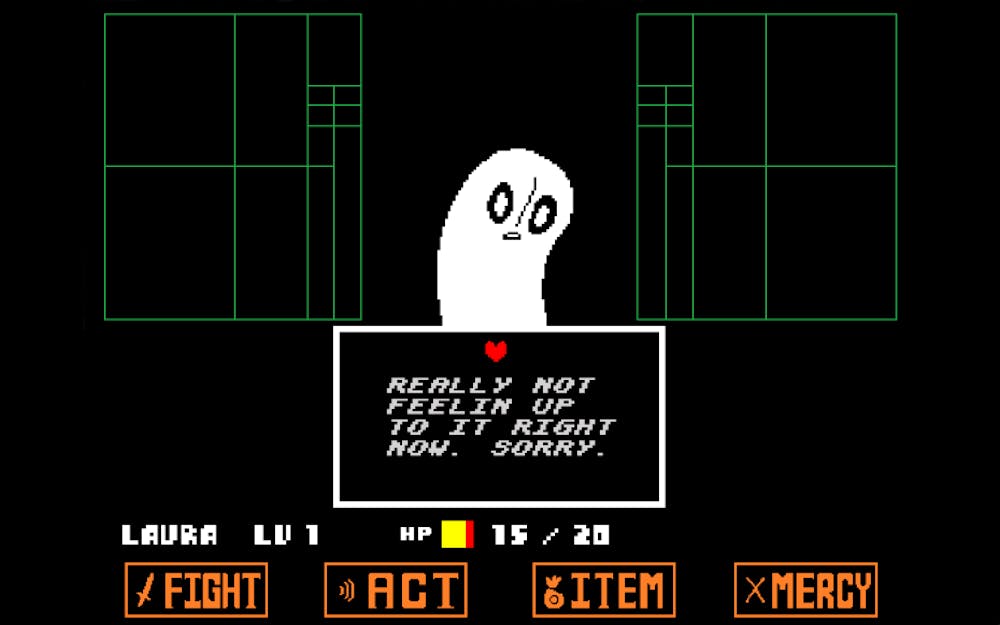Released: 9/15/15
Rating: 6/7
Undertale is an independently made role playing game (RPG), created, designed, and composed by Toby Fox in 2015. The game itself is two-dimensional and has an aesthetic that is similar to old RPGs like the original Final Fantasies. Undertale is a game based around a completely blank slate character. The only thing known about the player is their name, which you assign them at the beginning. Beyond that nothing is known, not the gender, place of origin, or even how they got there.
The player gets to fill in the pages of this book through his/her actions. Through non-player character (NPC) interactions the player has a chance to leave his/her mark on the fictional world, and the choices they make influences how other characters interact with them. One of the main ways that Undertale does this is through its combat system.
The combat system of Undertale is both innovative and refreshing. It starts off like any other RPG does, the character randomly runs into enemies which starts the combat...think Pokemon. Combat itself is broken into three main parts. The first is combat, which involves a large bar and a slider. Where the player stops the slider on the bar determines the damage the attack did.
After the player gets to attack the monster attacks back. Players gain control of a heart which is locked into a small box. Enemies then send white sprites of all kinds to the player. Whenever the heart comes in contact with an enemy the player will take damage. What makes this system even more unique is that each enemy has their own specific attacks. Some use a sword to sweep across the box, others light it up with tiny bullets to pierce the heart; no two fights are the same.
The final aspect of combat is talking. Talking is a pacifist option to combat in Undertale that opens up many other dialogue options with non-player characters, and in some cases is more effective than combat.
Undertale is by all means a fantastic, fun game. It has an innovative combat system that makes each play through unique, and a wealth of NPC interactions that allow the character to be emotionally attached to each and every character. Along with that, every person playing can impose their own play style, choices, and future for the character.
However, like all things, there are some shortcomings. First, Toby Fox doesn’t always know when to drop a joke. For example, in one part of the game a character keeps updating their social media page and it stops the player every few steps to tell them the update. This joke, which slows down gameplay, lasts for about 20 minutes and there is no way to skip it.
Other enemies may have a shortcoming that is overplayed to the point where the enemy no longer seems menacing, but instead like an oaf that stumbled into this dark world. Next, the game seems to pace out its difficulty poorly. The tutorial is incredibly easy, and so is the next level, but then immediately it jumps to upper levels of difficulty with no middle ground. However, upper difficulty in Undertale isn’t impossible, it just requires more than one attempt at any boss.
Finally, the game is definitely made for those who can sit down and really power through a game. Undertale is the kind of game that is enjoyed most with many play throughs of different styles, exploring all corridors, talking to every NPC as much as possible. This isn’t really a bad thing, more like a guideline, advising players to take the game.
Undertale is a fantastic game. It employs one of the most basic storytelling elements that video games can: the power of choice. The player gets to make their own mark on the world, and with a completely unique combat system, nothing ever feels like a chore. The cons are nowhere near a reason not to play the game.
I would rank this game a 6/7 as it is one of the best indie games of 2015.





